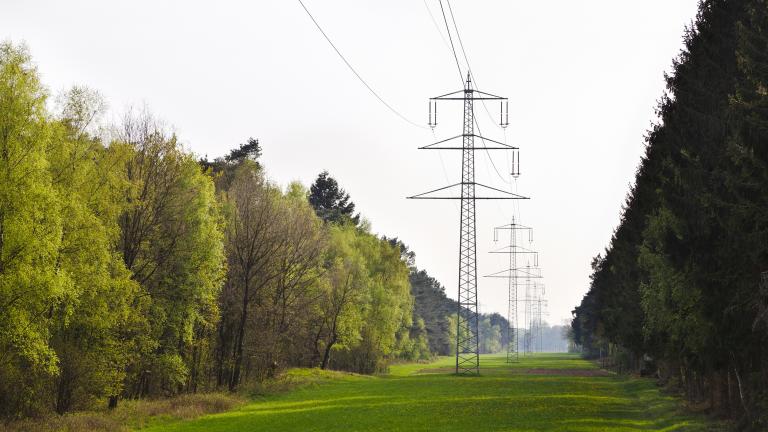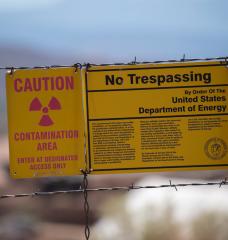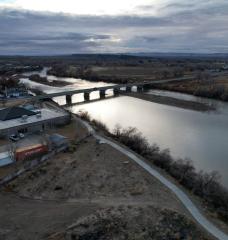
One of the dramatic changes to the energy landscape over the last decade has been the substantial decline in the cost of wind and solar generation. Globally, the levelized cost of electricity (LCOE) for wind and solar decreased by 69% and 89%, respectively, from 2010 to 2022 (IRENA, 2022). The US also saw similar trends with construction costs for wind and solar decreasing by 25% and 58% within the same period (EIA, 2023). New investments in these technologies therefore often make economic sense on their own, even without stringent decarbonization policies. Interregional transmission can be a valuable complementary investment.
The proposed BIG WIRES Act is a piece of legislation that requires each FERC Order No. 1000 region to meet minimum interregional transfer capability (MITC) requirements (Hickenlooper and Peters, 2023). A distinctive feature of the act is that it does not prescribe where each region should build transmission. Rather, it provides a way to calculate the transfer capability requirement—the minimum between 30% of a region’s peak load and 15% of its peak load plus its current transfer capability—and lets the regions decide how to meet it.1 This provides a more realistic, policy-driven grid expansion methodology to analyze the value of interregional transmission to the U.S. grid under current policies and deep decarbonization scenarios. We use the GenX capacity expansion model coupled with stylized heuristics that determine transmission builds to analyze four key areas: interregional transmission builds and grid characteristics, electricity system cost savings, grid reliability during extreme weather events, and climate benefits. We consider two main scenarios for a future 2035 grid—the current policies setting and the 95% CO2 reduction setting—and determine the impact of the BIG WIRES Act and interregional transmission on these two scenarios.
- Interregional Transmission Builds and Cost:
Table 1 shows the calculated MITC requirement and the existing and additional interregional transfer capability for each of the regions while Figure 1 shows the interregional transfer capability between regions. Both results show that most of the transmission builds are concentrated in the Eastern Interconnect owing to the way the minimum requirements are calculated and these regions’ higher peak loads. We also observe that some regions build more than the prescribed minimum because its neighboring regions have higher requirements. An example would be the New York region which builds beyond its MITC to satisfy the Northeast’s requirements. The blanket minimum requirements of the BIG WIRES Act can therefore induce transmission builds beyond what the requirement is. This is especially true in regions that are adjacent to only one other region.
With these transmission builds, the BIG WIRES Act leads to lower system cost in the order of $487 million and $3.21 billion annually in the Current Policies and 95% CO2 reduction scenarios, respectively. The savings come from being able to substitute interregional transmission with capital investments in thermal generators needed to balance the intermittency of renewables in unconnected regions. The larger savings in the 95% CO2 reduction setting emphasizes the complementary benefit of interregional transmission and VRE resources.

Table 1. Current and additional interregional transfer capability per region in the Current Policies setting (GW)

Figure 1. Current and additional interregional transfer capability per region in the Current Policies setting (GW)
- Reliability during Extreme Weather Events
Transmission infrastructure is believed to increase a power system’s reliability and mitigate the impact of extreme weather events. To test this hypothesis, we assume that an extreme weather event manifests in the form of simultaneous random natural generation capacity outages over a specified period.2 We then develop a Monte-Carlo simulation that randomly assigns the same amount of natural gas outages in each of a thousand simulations. A dispatch model is run to calculate the average non-served energy across all the simulations.
Table 2 shows the results of these simulations across different MITC % of peak load requirements. Our results indicate that increased transmission through MITC requirements lead to a substantial reduction in average generation outages during extreme weather events. This is because regions gain the ability to import power from its neighbors when there are outages. Most of these reliability benefits are seen in the Mid-Atlantic/Southeast and the Florida regions, which coincide with the regions where most of the transmission builds under the BIG WIRES Act are done. These results provide evidence supporting the need for more transmission to ensure grid reliability during extreme weather events.

Table 2. Average hourly outages in MWh (% Reduction relative to MITC % = 0)
III. Climate Benefits
Finally, we look at the climate benefits of interregional transmission and the BIG WIRES Act. We find that increased transmission consistently leads to lower CO2 emissions as seen in Figure 2. This is again because of more renewables in a more interconnected grid and the consequent reduction in generation from fossil fuels. In particular, the BIG WIRES Act leads to 43 million metric tons (Mmt) less CO2 emissions compared to when there is no BIG WIRES Act. This translates to roughly $8.2 billion of annual savings based on the EPA’s proposed estimate for the social cost of carbon of $190 per metric ton (EPA, 2023).

Figure 2. Total Emissions per MITC % under Current Policies
In summary, our results show that there are many benefits that arise from building interregional transmission and the BIG WIRES Act. The act leads to an increase in interregional transmission builds across the entire US, concentrated in the Eastern Interconnect. It also reduces system cost by reducing reliance on fossil fuel generators in favor of VRE resources. Interregional transmission and the BIG WIRES Act reduce the impact of extreme weather events by allowing regions to import power from its neighbors during outages. Lastly, there is a reduction in CO2 emissions because of an increase in VRE resources with more interregional transmission.






